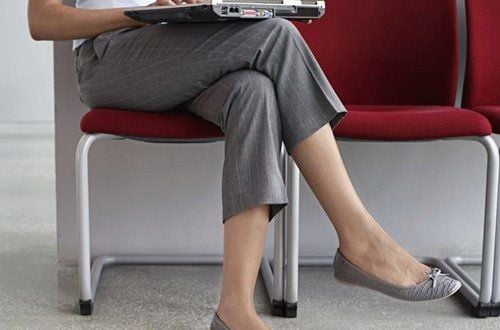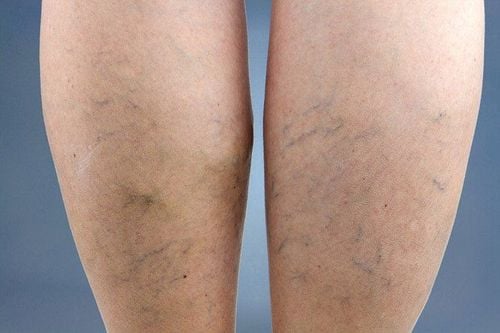This is an automatically translated article.
Many people have the habit of crossing their legs when sitting. Many people also think that it is a posture that shows politeness and elegance. But according to experts, sitting cross-legged for too long or making it a habit for a long time actually has many harmful effects on health.Video content is professionally consulted by Specialist Doctor II Pham Trung Hieu, Head of Hip and Pelvic Surgery Department, Center for Orthopedic Trauma and Sports Medicine - Vinmec Times City International Hospital
1. What happens to the body when sitting cross-legged?
The musculoskeletal system of the human body has a symmetrical structure, especially in the pelvis and legs. When we perform the act of crossing one leg over the other, we inadvertently disrupt this balance of the body, so of course there will be disturbances, especially in the musculoskeletal system.So what are those disturbances?
1.1 Displaced pelvis
Most noticeable when sitting with legs crossed is that the pelvis will be misaligned, one high and the other low. This leads to the spine being deviated as well. Many studies show that if you sit in a cross-legged position for more than 3 hours a day, you will be more prone to conditions from the neck, shoulders to the spine, and the pelvis is tilted to one side, the head is pushed forward more. and form a stooped, unbalanced gait. At the same time, the muscles of the back and hips have to stretch to pull back the balance axis, leading to a dull pain in the lower back in people with this sitting habit.
1.2 Increases the severity of varicose veins
When crossing the legs, ie one leg presses on the other, the blood vessels at the contact site will be pinched, leaving no room for blood circulation, thus easily leading to blockage or increased pressure pushing blood to the heart. Normally, small valves in blood vessels help prevent blood from flowing in the wrong direction, but if these valves are weakened, blood can pool, forming large veins known as varicose veins. Sitting cross-legged makes the symptoms of people who already have this disease worse.
Varicose veins not only cause unsightly because of creating tangled marks on the skin surface of the thighs and shins but also affect the blood circulation of the whole body.
1.3 Increased risk of osteoarthritis
Seems unrelated but in fact, when crossing the legs, blood flow not only to the legs but also to the joints in the lower extremities is also reduced, hindering the process of Mucus in the joints, causing the joints to dry out. This condition is most common in the knee, ankle, pelvis, and lumbar areas. At the same time, crossing the legs also makes the knee joint pressurized in the wrong position for a long time, both increasing pressure on the joint cartilage and causing strain on the ligament system. Therefore, this is a bad posture for people with knee osteoarthritis.
Once a habit is formed, it is not easy to change it in an instant, but with so many health-related consequences as mentioned above, you can start to pay attention to cross-over behavior. legs when sitting daily to gradually create positive change.

2. Change the way you sit for good health
Instead of sitting cross-legged, you can keep your legs parallel on the same plane so as not to put pressure on the pelvis and spine. Just pinching your knees politely and discreetly, you can still have a sitting posture that is both elegant and comfortable.For women, if you have to cross your legs due to clothes, cross your legs at the ankle, not the knee.
When sitting for a long time without being able to get up (like in long meetings), you can slightly raise your heels on both sides, and gently rotate your shins with the tips of your toes, while coordinating the movements. Gently stretch the knee, the movements can be repeated every 2-3 minutes. This will help the calf muscles relax, while increasing blood circulation to the leg area.
In addition, changing the sitting or standing position to exercise every 45 minutes to 1 hour is also recommended by doctors and experts to increase blood circulation to the extremities. Gentle movement after sitting for a long time also helps bring a lot of health benefits.
Please dial HOTLINE for more information or register for an appointment HERE. Download MyVinmec app to make appointments faster and to manage your bookings easily.














